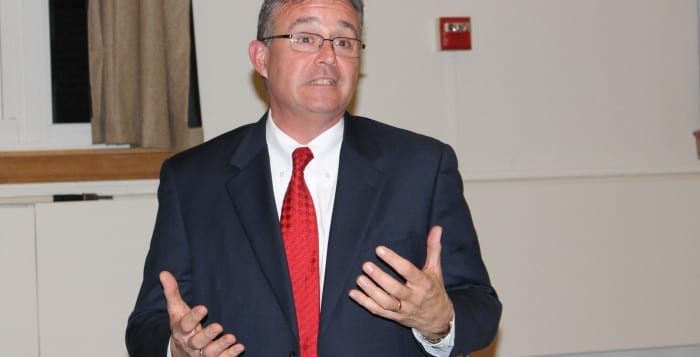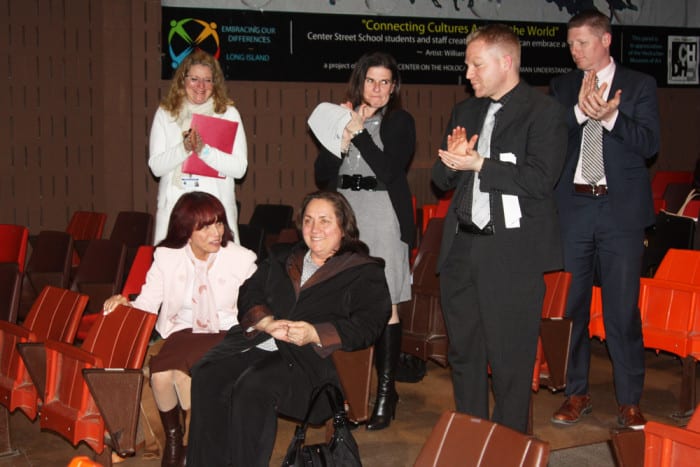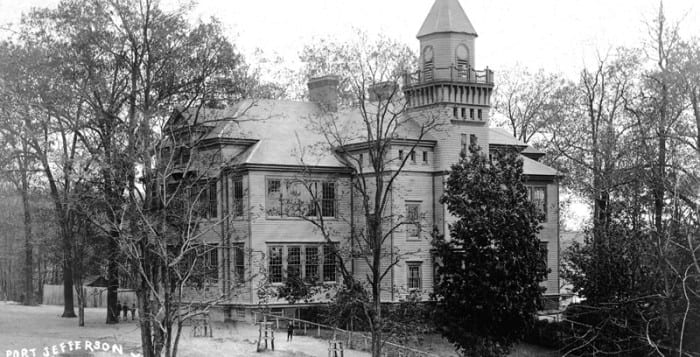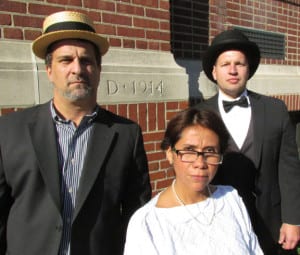By Aidan Johnson
The Port Jefferson School District Board of Education held its monthly meeting on Tuesday, July 11, at Edna Louise Spear Elementary School.
During the “old business” section, Superintendent of Schools Jessica Schmettan discussed several capital projects the voters approved in May 2022.
During the school year, the board has to get its plans approved by the New York State Education Department. Once approved, the projects can go out to bid.
A small section of the high school’s roof needs to be renovated and was awarded to a responsible bidder.
Elementary school pool
For the elementary school pool, even though NYSED approved it, the Suffolk County Board of Health still needs to approve it, asking for several redesigns of certain items, including where drainage sites are to be located.
Therefore, the project could not go out to bid, and as of this meeting, the pool will likely not be getting done this summer.
The school budgeted $561,000 for bleachers, but the price is coming in at just under $1 million, with some of the bids being for a smaller-scale bleacher than the downsized 650 seats (there are currently around 1100 seats) that the school would prefer.
Continuing supply chain issues are also getting in the way, and the bleachers may take anywhere from 10 to 12 weeks for production.
The pool is still open for student use.
Middle school drainage/BOCES
The retaining wall and drainage for the middle school have yet to have a bid come in under the $2.3 million allocated from the capital reserves.
Because of this, the board does not expect the retaining wall to be done this summer. The school architect is looking at redesigning the wall with poured concrete faced with stone instead of using pricier cinder blocks.
During the public comment section of the meeting, the parents of a child who will be attending the elementary school in the upcoming year expressed their concerns about the BOCES program that has been brought into the building.
Currently, BOCES is renting five classrooms as integrated for this summer and then four classrooms when September starts, Schmettan said in an interview.‘Our primary concern is to keep things safe for all students.’
— Ellen Boehm
“Those students will be integrated for recess, and then they will have gym, art and music with our teachers, but by themselves,” she said. “It adds revenue to the district and some differently abled children.”
The father of the child shared his worries about letting non-PJSD employees, along with the new students, have “unfettered access to this building,” he said.
“These are students that we don’t know, whose IEPs and potential issues we are not allowed to know by law,” the father said.
“We, as Port Jefferson, have no control over these particular students, and these are employees that are hired by BOCES, not Port Jefferson,” he added.
In response, BOE president Ellen Boehm said that over the past week, the school has been operational with the BOCES students, and there has not been a situation.
“Our primary concern is to keep things safe for all students,” she said. “At this time, there are no red flags.”
The Port Jefferson father responded that Boehm’s judgment was based on only one week in the summer when the Port Jeff students were not in attendance.
He also asserted that the BOCES agreement would not bring the district the financial benefit previously stated in the May meeting.
“Not including your potential chargebacks, Port Jeff will only see an average of $43,000 per year throughout the three-year lease, not the $105,000 that was estimated and listed in the budget proposals back in January as leases for Spring Street with no mention of Scraggy Hill,” he said.
However, Schmettan clarified why the board’s estimate is correct in her interview after the meeting, saying, “There’s a lease agreement for the actual space, which is what [he] was referring to, and then there are chargebacks for the teachers, so it does still estimate to about $100,000.”
“He is just estimating the cost of the actual physical space, but there’s also the cost of the employees associated that our teachers are providing instruction for,” the superintendent further explained.












